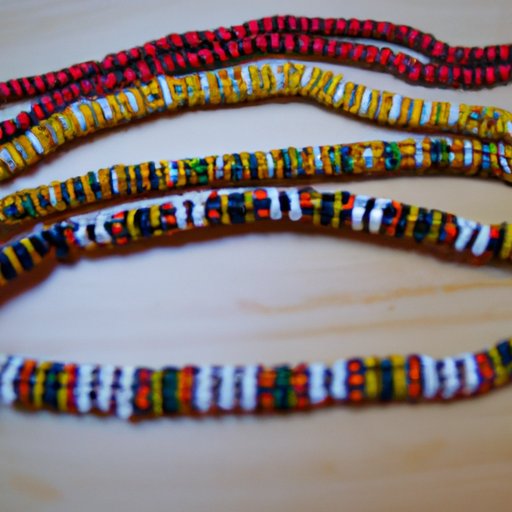Introduction
Cultural appropriation is defined as “the act of taking or using things from a culture that is not your own, especially without showing that you understand or respect this culture” (Oxford Languages). In recent years, the debate around cultural appropriation has been brought to the forefront of public discourse, with many questioning the appropriateness of certain items being adopted by people from other cultures. One such item is waist beads, which have become increasingly popular in recent years.

Overview of Waist Beads and their History
Waist beads are small glass or metal beads that are typically worn around the hips and abdomen. They are believed to have originated in West Africa and have been worn for centuries by women in many different African countries. Traditionally, they were worn by young girls as a symbol of coming of age and by married women as a sign of fertility and beauty. In recent years, waist beads have become popular among women in the Western world, particularly those looking for a way to celebrate their femininity and beauty.
Examining the Controversy of Waist Beads and Cultural Appropriation
What Is Cultural Appropriation? A Look at Waist Beads
The debate around cultural appropriation centers on the idea that people from one culture should not be adopting items that are intrinsically linked to another culture. In the case of waist beads, there is a strong argument that non-African people wearing them is a form of cultural appropriation. This is because the traditional significance behind waist beads is deeply rooted in African culture, and thus it could be argued that by wearing them, non-Africans are disrespecting the culture.
Exploring the Debate Around Waist Beads and Cultural Appropriation
The debate around waist beads and cultural appropriation is complex and multifaceted. On the one hand, some argue that wearing them is a form of cultural appreciation and a way of honoring African culture. Others, however, believe that it is disrespectful and a form of exploitation. As Dr. Yaba Blay, professor of Africana Studies at Drexel University, states: “It’s important to remember that the body adornment practices of African women are just that—their practices. To appropriate these practices without understanding or recognizing their origins and meanings is an act of disrespect” (The Cut).
Are Waist Beads a Form of Cultural Appropriation?
The History of Waist Beads and How They’ve Been Co-opted
The tradition of wearing waist beads dates back to the 15th century in West Africa. There, they were worn by women of all ages as a symbol of beauty, fertility, and femininity. Over time, they spread to other parts of Africa and eventually to other parts of the world. In recent years, waist beads have become increasingly popular in the Western world, with many people wearing them as a fashion statement.
Should We Be Wearing Waist Beads? Pros and Cons
The debate around waist beads and cultural appropriation is ongoing. Some argue that wearing them is a form of appreciation for African culture and a way of honoring its heritage. Others, however, believe that it is disrespectful and a form of exploitation. Ultimately, it is up to the individual to decide whether or not they want to wear waist beads.
Understanding the Significance Behind Waist Beads and Cultural Appropriation
In order to make an informed decision about whether or not to wear waist beads, it is important to understand the significance behind them. While waist beads may be seen as a fashionable accessory in the Western world, it is important to recognize their traditional roots and the cultural significance they hold for many African women. As Professor Blay states: “It is essential to understand what these practices mean to African women before we co-opt them as our own.”
Conclusion
Summary of the Discussion
This article has explored the debate around waist beads and cultural appropriation. We have looked at the history of waist beads and how they have been co-opted in recent years. We have also examined the arguments both for and against wearing them as a form of cultural appropriation. Finally, we have discussed the importance of understanding the traditional significance behind waist beads before deciding whether or not to wear them.
Final Thoughts on Waist Beads and Cultural Appropriation
Ultimately, it is up to each individual to decide whether or not to wear waist beads. However, it is important to understand the cultural significance behind them before making a decision. By doing so, we can ensure that we are showing respect for African culture and honoring its heritage.
(Note: Is this article not meeting your expectations? Do you have knowledge or insights to share? Unlock new opportunities and expand your reach by joining our authors team. Click Registration to join us and share your expertise with our readers.)
